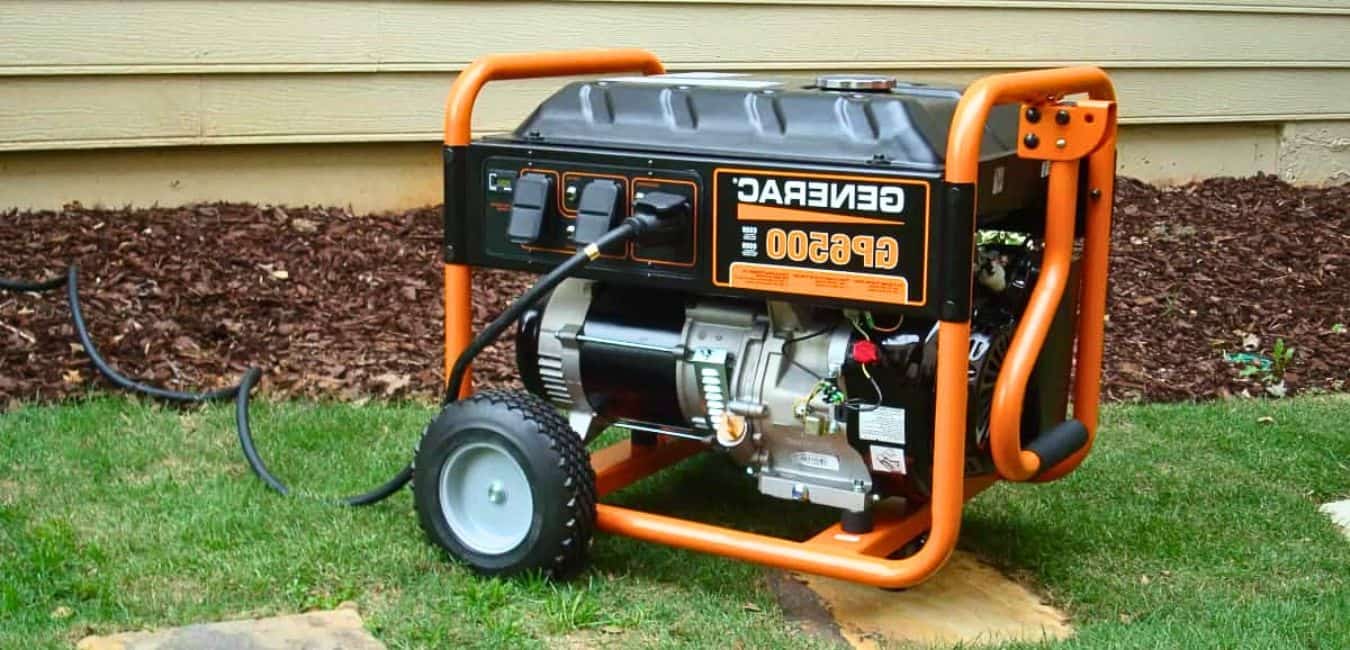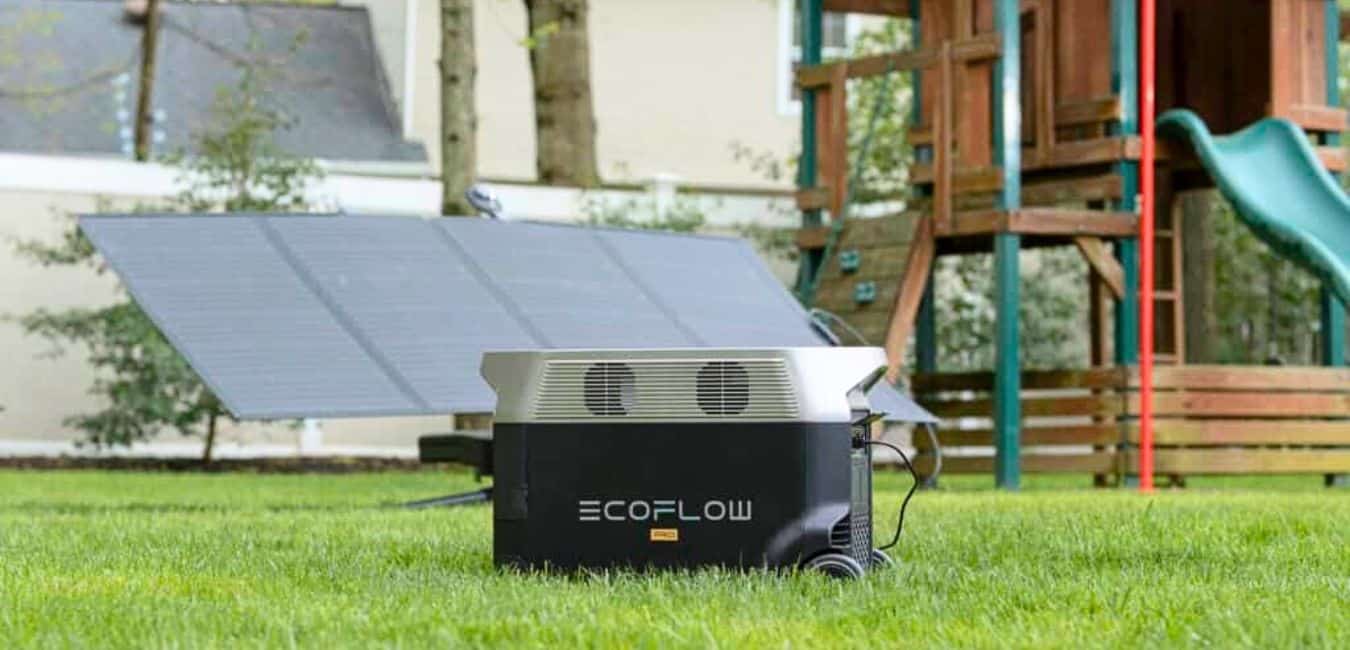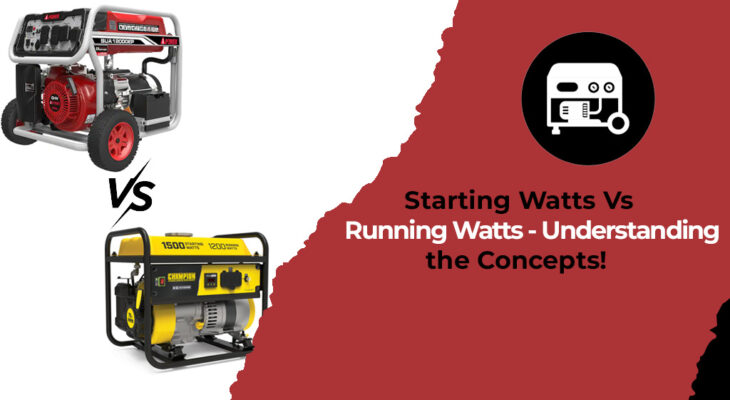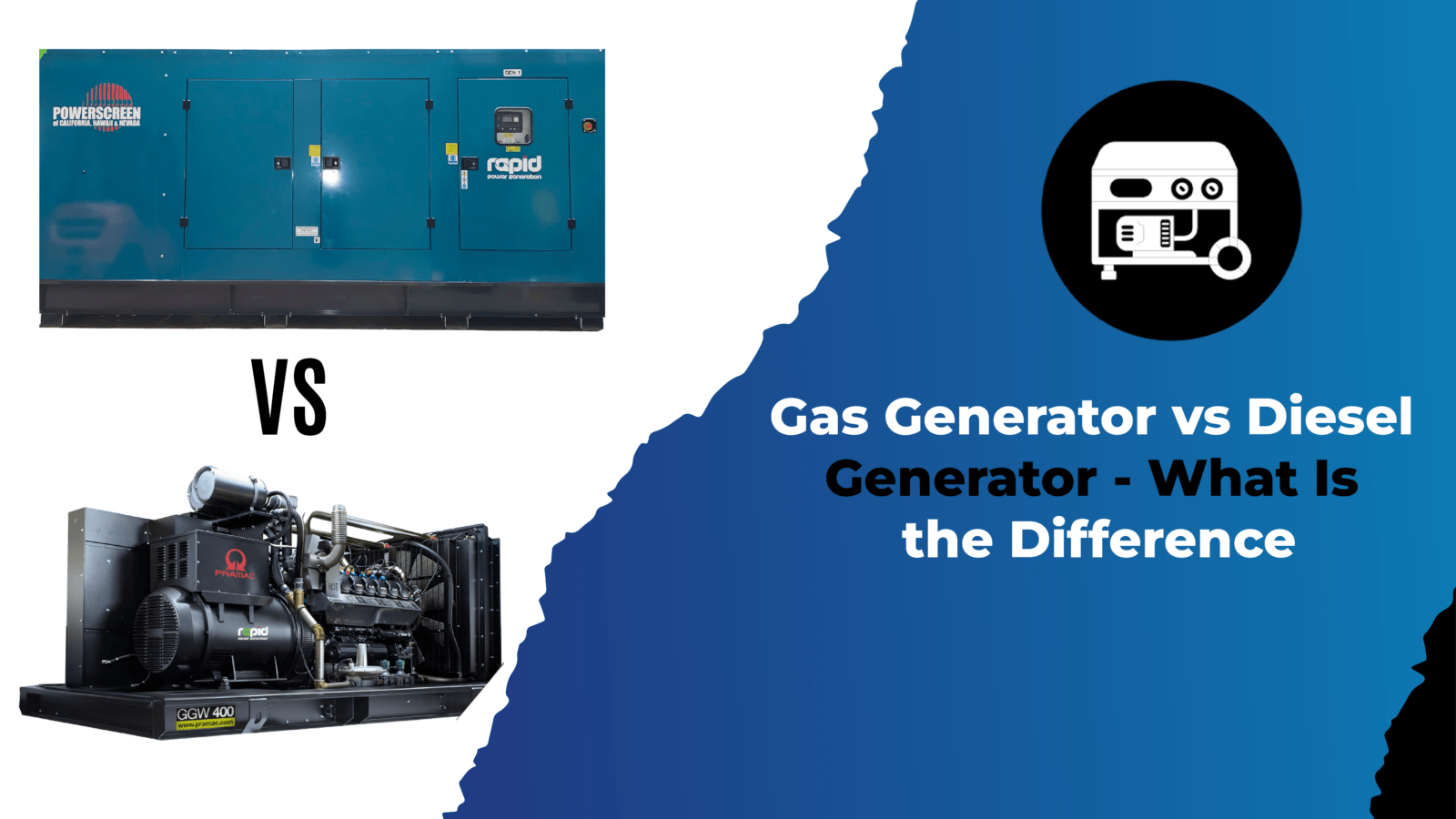Have you ever wondered how to pick the right generator for your needs? One important thing to know is the difference between initial power and continuous power. These terms might sound a bit technical, but they’re quite simple to understand.
Starting watts (initial power) and running watts (continuous power) are essential factors to consider when using electrical devices, especially with generators. Starting watts refer to the extra power needed when you first turn on an appliance, like a refrigerator or an air conditioner.
It’s like the initial boost you need to start something. Running watts, on the other hand, are the amount of power the appliance uses consistently once it’s up and running, just like the flow that settles for the running or operation of an appliance.
Choosing a generator with the right starting and running watts is crucial. If you don’t have enough starting watts, your appliances might not turn on properly. And if you don’t have enough running watts, the generator could get overloaded while trying to keep the appliances running. To avoid such inconveniences, you may take help by starting the watts calculator and running the watts calculator online for easy and quick calculation.
In this article, we’ll break down starting watts and running watts in the simplest way, helping you make informed decisions when selecting a generator. Let’s dive in and shed light on these watt matters!
First of All, Understand Wattage!
Before we move on to the concepts of Starting Watts and Running Watts, let’s take a closer look at what wattage means and how it’s calculated for electrical devices.
In the United States, the standard household electrical supply is 120 volts AC (alternating current). While there are ways to access 240 volts (which certain large appliances might use), we’ll focus on the common 120-volt supply for this explanation.
When you plug an electrical device, such as an electric iron, into an outlet, it begins to draw a certain amount of electric current. This measure of current is called amperage, and it’s often expressed in Amperes or simply “A.”
For instance, if an electric iron draws 10 Amperes of current, you might see it written as 10 Amps or 10A. To determine the wattage of the device, which is the amount of power it uses, you can calculate it by multiplying the voltage and the current.

Given that the supply voltage is 120 volts in this scenario, you would compute the wattage of the electric iron as follows:
- Wattage = Voltage × Current
- Wattage = 120V × 10A = 1,200 Watts
In simpler terms, the electric iron consumes 1,200 watts of power, often denoted as 1,200W. This power measurement helps us understand how much energy an appliance uses while it’s operating.
Now that we’ve understood the basic concept of wattage, let’s move on to our main concern, which is Generator’s starting watts vs running watts.
As we learn about starting and running watts further, let’s also step back in time to discover how generators came to be. If you’re curious about how these power machines evolved through history, you’ll enjoy my article on the ‘History of Generators’.
Why Do Generators Have Two Ratings, Starting and Running Wattage?
Generators have two ratings; Starting Watts and Running Watts, because different electrical devices require varying levels of power during their startup and operation phases.
Generators are designed to handle both of these scenarios. However, since providing a high amount of starting power for multiple appliances simultaneously can strain the generator, it’s important to have a generator with sufficient starting and running wattage capacities.
If a generator can’t supply enough starting watts, appliances might not start properly or even damage the generator. On the other hand, if it can’t provide enough running watts, appliances might shut down while in use.
Having two ratings helps users choose the right generator for their needs. For example, if you’re using a generator for camping, you might need to power lights, a small fridge, and a fan. The generator’s running wattage should cover the combined power needs of these appliances.

However, if you have a refrigerator in that mix, the generator’s starting wattage should be able to handle the fridge’s initial power surge.
In summary, generators have two ratings to ensure they can provide the necessary power for both starting up high-demand appliances and sustaining their operation, making them versatile and suitable for a wide range of electrical devices.
Generators also have KW (Kilowatts) and KVA (Kilovolt Amperes), just in case you aren’t aware of it. For a deeper understanding of the differences between KW and KVA and their significance in power measurement, you can check out my article “Differentiating Between KW and KVA”.
What’s the Difference Between Starting & Running Watts?
The difference between starting watts and running watts lies in their timing and their roles in powering electrical devices. Both are key considerations when using generators or selecting the appropriate power sources for various appliances.
STARTING WATTS
Starting watts, also known as peak/surge wattage, refer to the extra burst of power required by certain appliances when they are initially turned on. This initial power surge is needed to overcome the inertia of the device’s components and get them moving. Appliances that have motors, compressors, or other mechanical parts often require higher starting watts. For instance, air conditioners, refrigerators, freezers, power tools, and pumps are examples of appliances that need higher starting watts.
- IMPORTANCE OF STARTING WATTS
Starting watts are important because they ensure that appliances with motors or compressors can successfully start and run smoothly. If a generator doesn’t provide sufficient starting watts, these appliances might struggle to turn on, leading to malfunction or damage. A lack of proper starting watts could also overload the generator and cause it to shut down.
Therefore, having enough starting watts is extremely important to ensure the proper functioning of devices during their startup phase.

RUNNING WATTS
Generator running watts, also known as continuous watts, is the stable and consistent amount of power required to keep an appliance running once it has started. This is the regular power consumption needed to maintain the appliance’s operating speed without considering any initial power surges. Devices like lights, fans, TVs, and some smaller electronics generally require running watts.
- IMPORTANCE OF RUNNING WATTS
Running watts are important because they determine the generator’s ability to sustain the operation of appliances after their startup. A generator must be able to provide enough running watts to prevent appliances from shutting down unexpectedly during use. If the
generator’s running wattage capacity is exceeded, which can lead to overheating, tripped circuit breakers, or even damage to the appliances.
When discussing starting and running watts, remember to consider potential generator challenges. Explore more in my article: ‘Common Generator Problems
How to Determine Starting and Running Watts for a Device or Appliance?
As we’re already clear with the concept of starting and running watts, let’s now continue with how to estimate them for any appliance or device.
Every appliance has its own running and starting watts requirements. Some appliances don’t need that extra surge at all to begin working, while others might need more than double their regular power to start up.
To figure out the right generator for your needs, you have to know both the starting and running watts it can handle at the same time.
Here’s a simple way to estimate the starting and running watts you require:
- Find Appliance Wattage: Check the labels on your appliances to know how many watts they need to run. You can use a simple formula if you know the volts and amps: Volts (V) x Amps (A) = Watts (W).
- Add Running Watts: Tally up the running watts of all the appliances you want to connect to the generator. Is the total more than the running watts the generator can provide? If yes, think about getting a more powerful generator.
- Account for Starting Watts: Identify the appliance with the highest starting wattage. Add its starting watts to the total of running watts.
- Calculate Total: That final number is the total starting watts needed from the generator. Remember, don’t go beyond the generator’s starting watts limit to avoid overloading it.
This process helps you choose a generator that can handle your appliances’ different power needs, ensuring everything runs safely and smoothly.
In various situations, like brownouts and blackouts, understanding starting watts and running watts is crucial for managing power needs. Learn more about the differences between brownouts and blackouts by reading my article “Brownouts vs Blackouts: All That You Need to Know!”
Wattage Reference Guide
| Device, Appliance, or Tool | Running Watts (Rated Watts or Continuous Watts) | Additional Starting Watts (Peak Watts or Surge Watts) |
| 55” OLED TV | 100 Watts | 0 |
| Microwave Oven (1.2 cubic feet capacity) | 1,100 Watts | 0 |
| Microwave Oven (0.7 cubic feet capacity) | 700 Watts | 0 |
| Refrigerator | 600 watts | 1,800 Watts |
| Window Air Conditioner (6,000 BTU) | 520 Watts | 1,560 Watts |
| Central Air Conditioner (24,000 BTU) | 3,500 Watts | 10,500 Watts |
| 1/2 HP Water Pump | 1,000 Watts | 2,000 Watts |
| Laundry Electric Iron | 1,200 Watts | 0 |
| Hair Dryer | 1,000 Watts | 0 |
| Coffee Maker | 1,000 Watts | 0 |
| Toaster | 900 Watts | 0 |
| Garage Door Opener (with 1/2 HP Motor) | 900 Watts | 2,700 Watts |
| Washing Machine | 1,200 Watts | 2,400 Watts |
| Halogen Lamp (Work Light) | 300 Watts | 0 |
| Electric Drill 1/2” Chuck (6 Amp Motor) | 660 Watts | 1,320 Watts |
| Circular Saw (7-1/4” Blade) | 1,500 Watts | 2,800 Watts |
| Table Saw (10” Blade) | 1,800 Watts | 2,000 Watts |
| Air Compressor (1 HP Motor) | 1,500 Watts | 4,500 Watts |
| Desktop Computer with 24” Monitor | 800 Watts | 0 |
| Laser Printer | 1,000 Watts | 0 |
| Music Stereo | 500 Watts | 0 |
| Gaming Console | 100 Watts | 0 |
| Dishwasher | 1300 | 1800 |
| Washing Machine | 1200 | 2300 |
| Refrigerator/Freezer | 700 | 2200 |
| Light Bulb | 60-75 | 0 |
| Microwave | 600-1000 | 0 |
| TV | 500 | 0 |
| Toaster | 900 | 0 |
| Vacuum | 1440 | 0 |
| Coffee Maker | 1000 | 0 |
| Blender | 300 | 800 |
| Clothing Iron | 1500 | 0 |
| Dryer | 5400 | 7000 |
| Toaster Oven | 1200 | 0 |
| Curling Iron | 1500 | 0 |
| Space Heater | 2000 | 0 |
| Laptop | 50-300 | 0 |
| 20” Box Fan | 200 | 350 |
How Does Starting Power Compare Between Gas Generators and Solar Generators?
Gas generators usually have a starting wattage slightly higher than their running wattage, and bigger gas generators can power many home appliances due to their ample fuel supply. On the other hand, EcoFlow’s portable power stations use X-Boost tech to offer up to twice their running wattage, even smaller solar models like RIVER 2 Series can handle most high-wattage home devices.
But how do you decide?
Gas generators can be loud and emit harmful fumes. In contrast, solar generators are eco-friendly, silent, and they run on renewable energy. Just one solar panel can provide energy, and they’re also chargeable via outlets or other methods for portable use.
In essence, while both types can deliver high starting power, the choice boils down to the noise, pollution, and maintenance of gas versus the clean, quiet, and renewable advantages of solar generators.

Ever Heard of X-Boost?
X-Boost, unique to EcoFlow portable power stations and solar generators, gives a quick boost of starting watts, doubling their rated running watts. Unlike regular generators that might struggle with high-powered devices, X-Boost ensures safe startups even for appliances two times the generator’s output capacity.
However, X-Boost doesn’t increase the generator’s rated output; rather, it uses clever power management to maximize appliance performance. It temporarily boosts starting watts for high-power appliances.
For instance, the mighty DELTA Pro, rated at 3600 running watts, flexes to 4500W with X-Boost. Pairing two DELTA Pro units rockets AC output to 7200W. X-Boost is also in RIVER 2 Pro, leaping its 800 running watts to 1600W, handy for most home appliances.
Remember, X-Boost is exclusive to EcoFlow. It’s a game-changer, giving their generators an edge.
Starting and Running Wattages of Some Popular Generators
Considering some of the popular generator models from different brands, we’ve compiled their starting and running wattages. Let’s have a look.
| Generator | Starting Watts | Running Watts |
| Westinghouse 12500-Watt Portable Generator |
|
|
| WEN DF1100T Dual Fuel Portable Generator |
|
|
| DuroMax XP12000HX Dual Fuel Portable Generator |
|
|
| Pulsar G12KBN-SG Heavy Duty Portable Dual Fuel Generator |
|
|
| Generac 7676 GP8000E Generator |
|
|
| Champion Power Equipment 100416 TRI Fuel Portable Generator |
|
|
| Powermate P0081600 PM7500 Generator |
|
|
Starting Watts Vs Running Watts – FAQs
Conclusion
In conclusion, understanding the concepts of starting watts and running watts is essential for anyone using generators or seeking the right power sources for their appliances. Balancing both these wattages ensures smooth appliance startups and sustained functioning.
You should choose a generator that meets your needs, preferences, and environment. Understanding the details of starting and running wattage will help you to avoid overloading and damaging your generator while ensuring reliable and effective operation.






